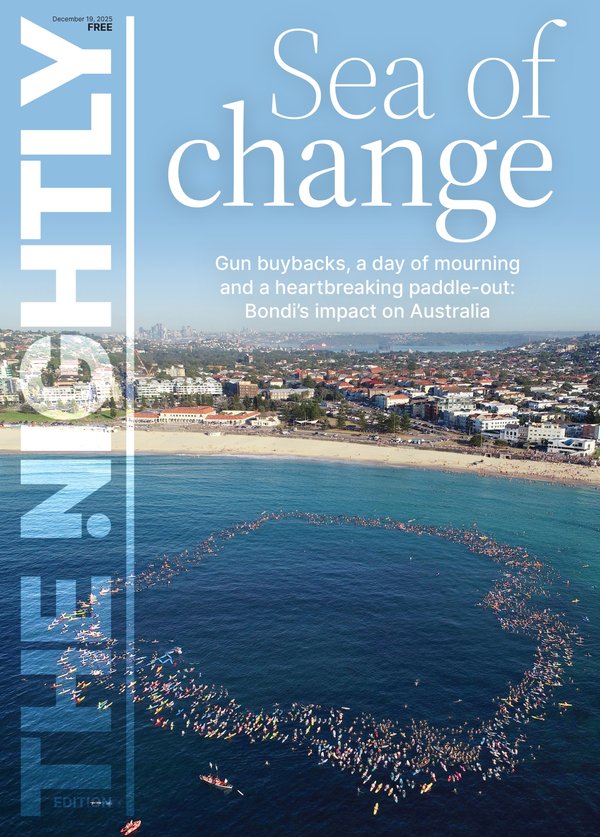Shaun Tan’s upcoming Tales From Outer Suburbia is a heartfelt love letter to Perth childhood summers
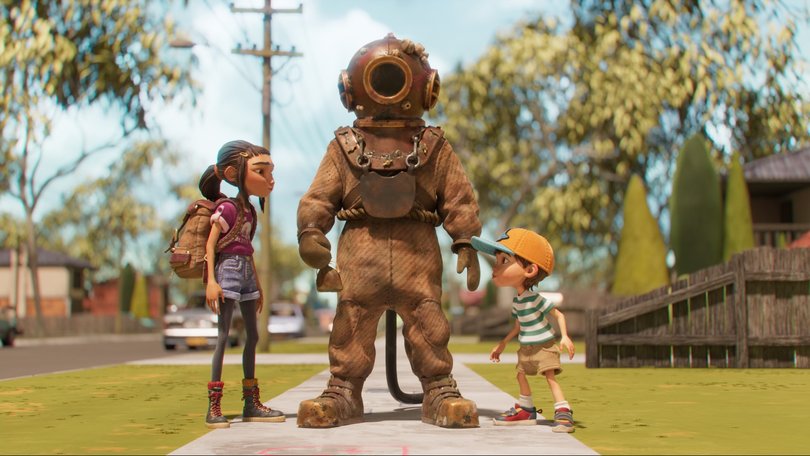
There’s the rhythmic clack of cicadas, the tick-tick-tick of a sprinkler. Somewhere, in the near distance, there’s a crow cawing, a dog barking and the sound of cricket commentary droning from a TV set.
Then, of course, there’s the light: that searing white hotness, those long orange twilights — the unmistakable sights and sounds of a Perth suburban summer.
It’s all so unique to us.
Sign up to The Nightly's newsletters.
Get the first look at the digital newspaper, curated daily stories and breaking headlines delivered to your inbox.
By continuing you agree to our Terms and Privacy Policy.And it’s all there, front and centre in Shaun Tan’s stunning 10-part animated series, Tales From Outer Suburbia, which drops all episodes on New Year’s Day.
The family-friendly series is based on Tan’s 2008 anthology, which was in turn inspired by his own experiences growing up in the ‘outer’ northern suburbs of Perth — WA audiences will find it all instantly recognisable.

Tan, an Academy Award-winning director, author and illustrator, has been working on this project for the better part of five years, and finally it’s hitting screens.
It’s a love letter, of sorts, to our suburban childhoods; a distillation of those endless school summer holidays; the weirdness, the wonderfulness and the ordinariness of it all — and it’s pure magic.
“It’s the first time I have heard an outside audience feeling emotionally affected by the series,” says Tan, who is speaking with Play from his home in Melbourne.
We are one of only a handful to have seen the first four episodes of the new series, and we were struck by the familiarity of seeing our 80s suburban Perth childhood played back to us via this dreamily surreal animated series.
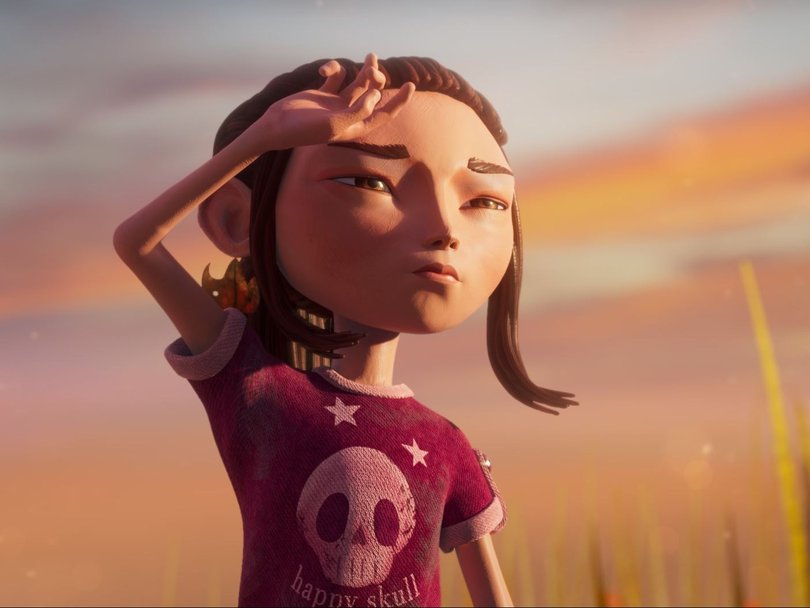
“It makes me wonder what international audiences will think of it,” Tan muses.
“I have always loved seeing any representation in TV or film of the landscape in which I grew up — it’s always been kind of uncommon, but I’ve always been really excited to see it.”
“And it’s the little things, like the cicada sound, or that feeling of heat and seasonal change . . .”
“I think I realised, growing up, that as humans, whether you’re in an indigenous tribe in the Amazon, or you’re a kid growing up in Western Australia, you have this sort of tendril of feeling growing out of you, of wanting to attach to things, and invest meaning in things you see and feel.”
“It could be an old tuart tree in the back garden, the smell of a decaying plastic tricycle on the front porch — those things become your spiritual touchstone, and they are as good as any other, I think.”
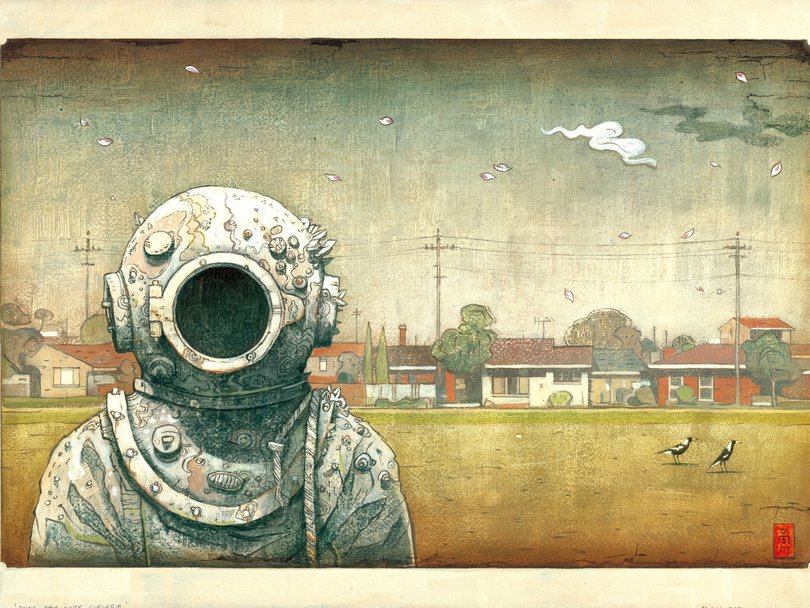
The interlinking tales that play out over 10 episodes of the series focus on 12 year-old Klara (voiced by Brooklyn Davies) and her six year-old brother Pim (newcomer Felix Oliver Verges), who move to the suburbs with their mum, Lucy (Geraldine Hakewill).
“Their new neighbourhood isn’t what it seems. The kids face weird encounters and wondrous experiences as they struggle to stick together and adjust to their new lives,” an official synopsis reads.
For audiences watching from WA — or indeed any suburban home across Australia — it will all feel instantly recognisable.
And that’s always been Tan’s gift: his ability to make his sometimes surreal stories feel somehow . . . universal.
Tan’s suburban Perth childhood, so unique in so many ways, is also someone else’s suburban English childhood; their suburban American childhood; their suburban Spanish childhood — the magic and mundaneness of that experience crosses cultures and continents.
“When we started the series, what impressed me most about Shaun’s books was his combination of uniquely Australian surrealist imagery, with stories grounded in his personal experiences, yet thematically they had universal appeal,” says series director, Noel Cleary.
“In adapting Tales for the screen, it was important that we anchored the surreal visual style around unique and relatable characters, whose journeys would resonate with children and their families, who are interested in unusual and at times challenging storytelling.
“I feel that Klara and Pim’s experiences in the series provide such a journey.”
“It’s this feeling,” Tan goes on to explain.
“We live in this constantly overturning post-industrial culture, where everything is changing, and everything is a little uncertain, and things haven’t settled into their place the way they once would have.
“But we still have this spiritual connection.
“Even the colours of the shadows on the footpaths — I have a spiritual connection to the shape of that shadow on the footpath.
“Subconsciously it’s burnt into me.
“And it’s so nice to be able to represent that in art and literature, and now in a TV series.”
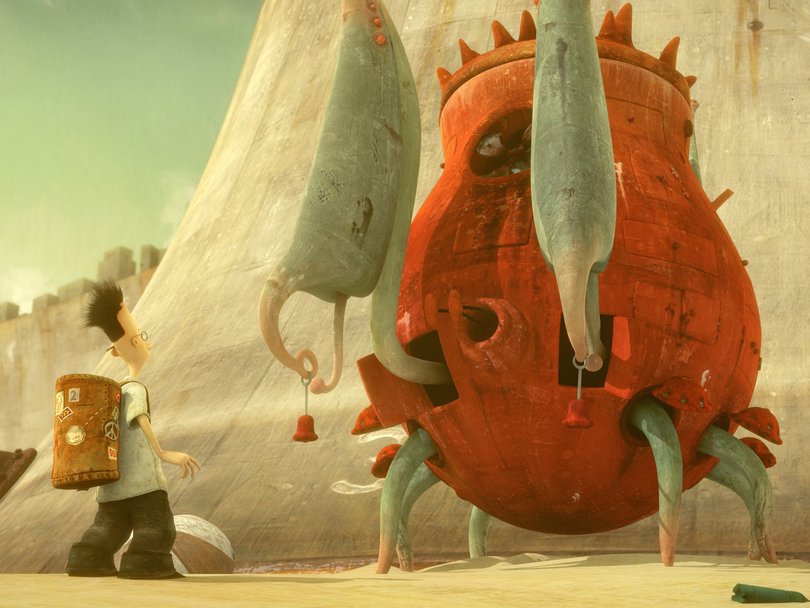
By choosing Klara and Pim as the central characters in the story, Tan is able to show how each react to the uncertainty of their new surroundings: Pim, through his childish openness, and through Klara, who is beginning to see the world with older eyes.
“That was always the idea, that Pim is the more unfiltered protagonist — he is a proper child, and he’s open,” says Tan, whose own children — a girl and a boy — are, coincidentally, currently the same age as the children in the series.
“The mum, she’s the adult, and she’s a bit like, ‘I have got problems, let me deal with those,’ and Klara is in the middle.
“It’s that age where you have one foot in the childhood joy and you are still open and you can still see things, but you are also starting to close off, and be worried.
“And so she’s really the anchor for the whole series, as she straddles that line.”
Similar to the global success of children’s favourite series Bluey, beloved by children and adults alike, this series is likely to find plenty of fans across all age groups, and across all parts of the world.
Tan’s books have been translated across 28 territories, striking a chord with readers all across the world. Adult audiences have always connected with his book’s universal, deeply human themes of alienation, loneliness and displacement. By contrast, younger readers have always found his work accessible, approaching his intricate illustrations with openness and imagination.
The worlds he builds are dreamlike and strange and full of inventive creatures and scenarios, piquing children’s curiosity — and inspiring them, too.

“It’s interesting — I get a lot of kids sending me drawings, and what I like about them is that they are not copying my stuff,” Tan explains.
“They’re actually taking the basic idea, very much as this team has done with this TV production, and doing a variation on it.
“Sometimes I am a little bit jealous, because the kids will come back with a drawing, and I’ll be like, ‘I wish I had thought of that!’”
Tan admits that when he wrote Tales From Outer Suburbia, he wasn’t even sure it would get published.
“It was a bit weird. But I really wanted to do it, because I imagined some kid out there, in suburban Perth, whose main connection with the outside world — (just like mine) in the 1980s — was the public library,” he explains.
“And I liked to think that’s how they would find this book; that they might see a picture of, say, a concrete northern suburbs bus stop, or the laneways at the back of my school, and they would recognise them and feel very charged and empowered by seeing in a properly published book, the stuff they see in their everyday world.”
Tan’s words and his vision as a filmmaker was what attracted seasoned British actor and comedian Dawn French to the project — she plays Pim and Klara’s grandmother.
“Grandma is amazing. She’s courageous and adventurous, she’s quite chaotic, she’s a bit bonkers,” French explains.
“What drew me to the character, and the whole project, is it’s quite possibly the strangest thing I’ve ever read!
“It’s very surreal — you understand it on a visceral level but you also don’t understand it, so you’re drawn in to try and make sense of slightly surreal things.
“This is a series about big, big themes: themes of rejection, forgiveness, absence, loss, grief, judgment, friendships.
“I think it’s absolutely crucial that we make good quality shows for children and for families because it’s a shared experience when you watch something together — that’s when you bond as a family.”
And it’s not hard to imagine that families, watching from the lounge rooms of suburbia right across the world, will find a little piece of magic in this.
“My happiest memories as a child are of things that we all watch together,” French says.
“To make something as brilliant and beautiful as this is crucial.”
Tales From Outer Suburbia premieres on New Year’s Day on ABC and iview.
Originally published on The West Australian
